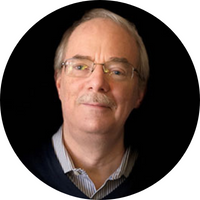
How does a recent chemistry undergraduate – aiming for a career in the pharma industry – decide about investing the time and money to pursue a Ph.D.? What should they think about as they make this important decision?
My own experience was not typical, because my father and grandfather were both Ph.D. chemists and I grew up expecting (and expected) to follow in their footsteps. There are many opportunities in the pharma and biotech industry for chemists today, both at the BS/MS and Ph.D. levels, and the job market is actually better than it was when I started my job search several decades ago.
My advice to recent chemistry graduates planning careers in drug discovery is to base your decision about pursuing a Ph.D. program on your commitment to doing research. If this is your passion, a Ph.D. degree can open doors, and accelerate your future advancement in research or in management. A Ph.D. program can provide an outstanding introduction to research and be an extraordinary learning experience. Of course, it’s important to choose a strong research program and identify a supportive research advisor.
If you’re not certain about making this investment, a position at the B.S. level can provide an opportunity to learn on the job, with the option to enter a Ph.D. program at a later time. Several chemists in my groups at Merck and Schering-Plough followed this path with great outcomes. Other career paths exist outside the lab in both pharma and biotechs, and experienced B.S. chemists often have opportunities to move to non-laboratory positions in the organization, depending on their career goals.
The pharma industry frequently comes under attack by the media and politicians for drug pricing. Setting aside whether the criticism is valid, what impact does it have on the morale of the people charged with finding new medicines?
Most of my colleagues in large pharma chose drug discovery as a career due to a desire to discover new medicines that can help reduce human suffering. Some had experienced disease in their families or had other personal motivations. The challenges we face in bringing a new drug from concept to reality require persistence and a sense of optimism in order to succeed.
Although hearing the comments of politicians and others who malign the industry is frustrating, I can’t think of a single colleague who left the industry because of it. I believe that the greater risk is that the never-ending debate around drug prices will result in actions that undermine the contributions the industry makes to improving human health.
You spent nearly 35 years in the pharma industry, managing, leading and directing large groups of chemists. What did you learn about motivating people, and helping them get the most out of their abilities?
I had excellent mentors and role models in the two companies I worked for, including Ralph Hirschmann, Paul Anderson, Art Patchett, Ashit Ganguly and Catherine Strader. They not only taught me how to run drug discovery programs but had an enthusiasm and energy that was contagious. I tried to pass on that passion for discovery to my group members and colleagues and to remind them that their work was important and urgent. I learned how important it was to be a strong advocate for the scientists in the project teams that I led, and to provide opportunities for them to stand out in the organization.
Based on my experiences in industry, my recommendations to those pursuing careers there are the following:
- Do your best to stay focused on drug discovery and work hard to gain a deep and critical understanding of medicinal chemistry. Expand your reading beyond chemistry to acquire a basic knowledge of related disciplines such as pharmacology, drug metabolism and toxicology.
- Build your resume, and try to get (at least) one publication, presentation and patent application from each project you contribute to, so that your contributions can be recognized. Don’t put off writing the paper on your project, even if you’re busy working on the next project.
- Find ways to contribute more to your projects and to medicinal chemistry. Work to become an expert on an important topic and write a review article. Look for opportunities to become involved in medicinal chemistry outside your company, including in the American Chemical Society.
- Maintain a sense of urgency in your work, since what you are doing is important to the lives of patients. Remember that you have limited time in your career to make a difference and take advantage of your opportunities.
You are a highly successful medicinal chemist, and you have rubbed shoulders with scores of other highly successful medicinal chemists. What essential traits do you share?
Thank you for the compliment. I have been privileged to know some of the most successful “drug hunters” and have tried to learn by watching how they approach challenges that they faced. What they have in common is that they:
- Develop a keen sense of what types of molecules are likely to be successful as drugs.
- Are creative drug designers who can generate novel ideas and suggest what to make next in a program.
- Read widely in medicinal chemistry and learn from the successes and failures of other programs.
- Continually broaden their knowledge in other areas of drug discovery.
- Are open to new approaches and technologies in drug discovery and are early adopters.
- Maintain a positive, optimistic outlook despite the inevitable setbacks in research.
For those interested learning more about what it takes to succeed in medicinal chemistry, I recommend an excellent Perspective article in the Journal of Medicinal Chemistry written by Mark Murcko (DOI: 10.1021/acs.jmedchem.7b01445). Another excellent resource is the ACS webinar “How to Succeed in Drug Discovery: Insight from Medicinal Chemists.”
2009 brought momentous change to the pharma industry when Pfizer merged with Wyeth, and Merck purchased Schering Plough -- the total costs of the two deals exceeding $100 billion. Looking back over the last ten years, what were the major impacts of those mega-deals to the industry?
Following these two mergers (and others), the integrated companies made major reductions in their research operations - closing sites, laying off thousands of scientists, and abandoning ongoing drug discovery programs and entire therapy areas. I believe that the loss of experienced scientists and massive relocation of research operations to the Boston and San Francisco areas resulted in a prolonged decrease in productivity. The actions taken caused major disruptions in the lives of scientists separated from the companies, and those who remained.
There were doubts expressed that the pharmaceutical industry would continue to be a rewarding career path for chemists. Fortunately, employment of medicinal chemists has rebounded, with expansion underway both in large pharma and in start-up companies. It is probably safe to predict that mergers and acquisitions will continue, but I believe the industry has a bright future.
In its January 14 issue, the Wall Street Journal reported that middle-age Americans are dying of heart disease and strokes at a rising rate. You focused a significant amount of your career on cardiovascular therapy areas. Is the pharma industry likely to produce significant new bullets to fire at this disease?
Heart attack, pulmonary embolism and stroke remain major causes of death worldwide, with the magnitude of risk for women becoming fully recognized only in recent years. I was involved in cardiovascular drug discovery throughout my 35-year career in industry and continue to work in this area as a consultant.
At Merck and Schering-Plough, I was fortunate to have the opportunity to contribute to the discovery and/or development of four marketed cardiovascular drugs. Unfortunately, increases in obesity and diabetes are reversing the reduction in mortality achieved with drugs that lower blood pressure and reduce cholesterol levels.
There is a growing population of adults and children with non-alcoholic fatty liver disease (NAFLD) that can progress to non-alcoholic steatoheptatitis (NASH), resulting in fibrosis and cirrhosis. There are programs throughout the industry to develop drugs that can stop or even reverse this process, and part of my consulting work is focused in this area. New drug candidates have entered clinical trials, and more are on the way.
Heart failure also remains a major cause of mortality, especially among the elderly. According to the Centers for Disease Control and Prevention (CDC), only one-half of all people diagnosed with congestive heart failure survive beyond five years. Although multiple classes of drugs, devices and surgery are available, there is an important unmet medical need for new treatments. Clinical trials of promising new drugs classes are underway, including myosin activators, sodium-glucose cotransporter-2 (SGLT2) inhibitors, soluble guanylate cyclase stimulators and myeloperoxidase inhibitors.
Speaking of developing new medicines, would you explain for people outside of the pharma industry the challenges associated with bringing new medicines to market?
My experience has been in small molecule drug discovery, so I will focus on that in my answer. Discovering new drugs is so challenging that an experienced and creative medicinal chemistry can spend an entire career in the industry and not work on a single research program that leads to a marketed drug.
Many things must go right for a drug discovery program to succeed. A target protein must be chosen that is directly related to the disease process, and be “druggable,” meaning that inhibiting or stimulating its activity must be possible with a drug molecule (“lead” molecule) that can be delivered to the target in the body.
The lead must be capable of being modified to identify additional new molecules with desired “drug-like” properties and having high selectivity versus other protein targets. In many cases, an oral drug is desired, and it must be absorbed and maintain levels in the body capable of blocking or activating the target protein. It may be necessary to synthesize and evaluate hundreds or even thousands of new molecules to identify a development candidate that has the desired activity in animal disease models and is non-toxic. Only then can the candidate move into clinical trials in humans.
The success rate for a new compound entering clinical studies is around 10% overall but can be as low a 5% for cancer and central nervous systems drugs. As a result, most of what a scientist experiences in drug discovery is failure, and persistence is essential. Clinical trials can be exceedingly expensive, and failure of a development candidate can lead to a program being abandoned or, in the case of a start-up company, the end of the company. Discovery and development of a successful drug can take 10-15 years from initiation of a program to approval.
Among other things, you have won prestigious awards, authored more than 200 research publications, awarded over 90 U.S. patents, and presented your work at countless meetings. When you look back on your career, what’s been most gratifying for you?
I grew up in a family of chemists. My father, grandfather and uncle were organic chemists, and my aunts both taught high-school chemistry. My brother and I were exposed to laboratories and the basic concepts of chemistry from an early age. I had the opportunity to work at my father’s specialty organic chemical company during high school, doing reactions in liquid ammonia and monitoring large-scale distillation columns. I was drawn into the world of organic chemistry. I graduated with a major in chemistry from the Ohio State University, completed my Ph.D. with Robert B. Woodward at Harvard and did postdoctoral work with Gilbert Stork at Columbia University. I feel privileged to have carried on the family tradition for another generation (as did my younger brother, Mark).
I’m very proud that my groups at Merck and Schering-Plough advanced over 20 drug candidates into development and 11 into clinical studies. At Schering-Plough, our discovery of the thrombin receptor antagonist vorapaxar (ZontivityTM), approved in 2014 for prevention of heart attack, was a highlight, as was our program to discover the potent, brain-penetrant beta-secretase (BACE1) inhibitor verubecestat (MK-8931) for treatment of Alzheimer’s disease (AD). Although BACE1 inhibitors ultimately failed to show benefit in AD in clinical trials, this program presented incredible challenges that required a strong team effort to solve.
My involvement in ACS has contributed greatly to my career and to my enjoyment of chemistry. I’ve had the honor to serve as chair for two divisions (MEDI and ORGN) and as perspectives editor for the Journal of Medicinal Chemistry. I’m just beginning a new role as chair of the ACS Budget and Finance committee, which I’m looking forward to. My work in ACS has given me the opportunity to meet and interact with many talented ACS volunteers and staff.
Above all, I’m grateful to the many outstanding colleagues at the two companies where I worked, and in my consulting activities, for their contributions to the success and excitement I’ve enjoyed in my career.
Born and raised in Columbus, Ohio – and an Ohio State undergrad - you were neighbors with Chemical Abstracts Service. What was your first exposure to CAS? And what role did CAS have on your career success?
CAS started out on the OSU campus, and had moved just north of the campus by the time I started there as an undergraduate in chemistry, so I was well aware of Chemical Abstracts while growing up in Columbus.
During my graduate research at Harvard, I spent many hours in the chemistry library looking up molecules and reactions of interest in the black-bound Chemical Abstracts books. Even then it was clear to me that CAS was going to play a major role in my career in chemistry, and it certainly has. From the bound books, to STN, to SciFinder, CAS was a vital resource for my career in the pharmaceutical industry.
I was involved in negotiating SciFinder site licenses for both Schering-Plough and Merck. As a medicinal chemistry consultant, I use SciFinder every day to identify synthetic routes, to search for information on drug targets and to carry out patent searches.
Many of our readers have pets. Do prescription medicines for use in animals ever undergo testing as drug for humans?
Animal health drugs have been repurposed for human use. Merck’s animal health division developed ivermectin for control of ticks in dogs and cats in the 1980s. It later became an important drug (Mectizan®) for treating river blindness in humans, and this innovation at Merck was recognized by awarding (part of) the Nobel prize in medicine in 2015 to William Campbell, now at Drew University in my home state of New Jersey.
It is actually more common for drugs developed for use in humans to be repurposed for animal health, and there are numerous examples. My group at Schering-Plough contributed two drug molecules discovered in our cardiovascular and CNS projects to animal health programs that conducted clinical trials in dogs for obesity and anxiety. It was very interesting to learn about the clinical studies in dogs and their endpoints. There are many unmet medical needs in the veterinary health industry, and it is estimated that 90 percent of pet medicines are actually drugs for humans that veterinarians use off-label in dogs and cats.

William Greenlee received his B.S. degree in chemistry at The Ohio State University and his Ph.D. degree in chemistry from Harvard University, and completed postdoctoral work at Columbia University. He began his career in medicinal chemistry at Merck Research Laboratories, Rahway, NJ, where he was Senior Director, Basic Medicinal Chemistry. He later joined the Schering-Plough Research Institute, Kenilworth, NJ where he was Vice President of Chemistry, CNS and Cardiovascular/Metabolic Diseases. For the past six years, he has worked as an independent medicinal chemistry consultant, and serves on several scientific advisory boards.
His career spans over 35 years and includes contributions to the discovery of the antihypertensive drugs enalapril (Vasotec™), lisinopril (Prinivil™) and the antithrombotic drug vorapaxar (Zontivity™) as well as to the BACE1 inhibitor verubecestat (MK-8931), which completed Phase III clinical trials for treatment of Alzheimer’s disease. Bill has been the recipient of numerous honors and awards including the Alfred Burger Award in Medicinal Chemistry from the ACS in 2004. He has chaired both the Division of Medicinal Chemistry and the Division of Organic Chemistry. He was inducted into the Division of Medicinal Chemistry Hall of Fame and was elected an ACS Fellow and an AAAS Fellow in 2006. Bill served as Perspectives Editor for the Journal of Medicinal Chemistry (2006-2017) and now serves on the Editorial Advisory Board for ACS Medicinal Chemistry Letters. He is co-author of over 200 research publications, and an inventor of over 90 issued U.S. patents.
This article has been edited for length and clarity. The opinions expressed in this article are the author's own and do not necessarily reflect the view of their employer or the American Chemical Society.
Copyright 2020 American Chemical Society (All Rights Reserved)







